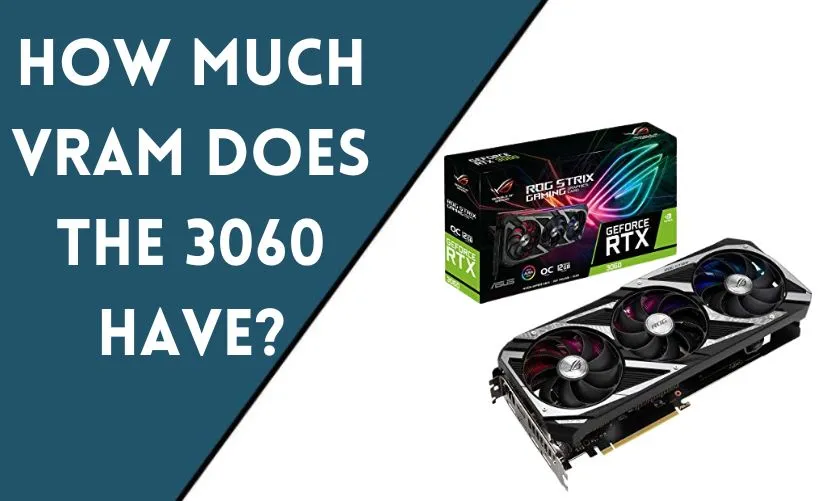
If you’re a gamer, content creator, or simply someone who needs a powerful graphics card for work or play, you’ve probably heard of the NVIDIA GeForce RTX 3060. It’s a popular mid-range graphics card that offers impressive performance for its price. However, one question that many people have is how much VRAM (Video Random Access Memory) the 3060 has. In this article, we’ll explore the answer to that question and explain why VRAM is an important factor to consider when choosing a graphics card.
Overview of the NVIDIA GeForce RTX 3060
Before we dive into the specifics of the 3060’s VRAM, let’s first give a brief overview of the card itself. The NVIDIA GeForce RTX 3060 is a mid-range graphics card that was released in February 2021. It’s based on NVIDIA’s Ampere architecture and features 3584 CUDA cores, 112 Tensor Cores, and 28 RT Cores. It has a base clock speed of 1.32 GHz, a boost clock speed of 1.78 GHz, and 12 GB of GDDR6 VRAM.
What Is VRAM?
VRAM (Video Random Access Memory) is a type of memory that is used by graphics cards to store and access data that is needed for rendering images on a display. When a computer or a game console is running a game or a graphics-intensive application, the graphics card is responsible for rendering the images and sending them to the display. The VRAM is where the graphics card stores the textures, models, and other data that it needs to render those images.
How Much VRAM Does the 3060 Have?
Now, let’s get to the main question: how much VRAM does the 3060 have? The answer is that the NVIDIA GeForce RTX 3060 has 12 GB of GDDR6 VRAM. This is a significant amount of VRAM for a mid-range graphics card, and it’s one of the reasons why the 3060 is such a popular choice among gamers and content creators.
Why Is VRAM Important?
VRAM is an important factor to consider when choosing a graphics card because it directly affects the card’s performance. When a graphics card doesn’t have enough VRAM to store the data that it needs for rendering images, it has to rely on system memory (RAM) instead. This can cause a significant performance drop, as system memory is much slower than VRAM.
Additionally, VRAM is also important for running games and applications at high resolutions and detail levels. When a game or an application is running at a high resolution, it requires more VRAM to store the data for rendering those images. If the graphics card doesn’t have enough VRAM, the game or application may experience stuttering, low frame rates, or even crashes.
Other Factors to Consider
While VRAM is an important factor to consider when choosing a graphics card, it’s not the only factor that determines a card’s performance. Other factors to consider include the number of CUDA cores, clock speeds, and memory bandwidth. Additionally, the specific use case (gaming, content creation, etc.) will also affect the ideal choice of graphics card.
Conclusion
In summary, the NVIDIA GeForce RTX 3060 has 12 GB of GDDR6 VRAM, which is a significant amount for a mid-range graphics card. VRAM is an important factor to consider when choosing a graphics card, as it directly affects the card’s performance and its ability to run games and applications at high resolutions and detail levels. However, other factors such as CUDA cores, clock speeds, and memory bandwidth should also be taken into consideration.
Frequently Asked Questions
Is 12 GB of VRAM enough for gaming?
Yes, 12 GB of VRAM is generally enough for most games. However, if you’re planning on running games at very high resolutions, such as 4K, or if you want to use high-resolution texture packs, you may need more VRAM.
How does the 3060 compare to other graphics cards in terms of VRAM?
The 3060 has the same amount of VRAM as the 3060 Ti and the 3070 but less than the 3080 (10 GB), the 3080 Ti (12 GB), and the 3090 (24 GB). However, the performance of a graphics card depends on more than just VRAM, so it’s important to consider other factors as well.
Can you upgrade the VRAM on a graphics card?
No, you cannot upgrade the VRAM on a graphics card. VRAM is integrated into the graphics card’s circuitry and cannot be replaced or upgraded.
What happens if a graphics card runs out of VRAM?
If a graphics card runs out of VRAM, it will have to rely on system memory (RAM) instead. This can cause a significant performance drop, as system memory is much slower than VRAM. In extreme cases, the game or application may crash.
How do I know how much VRAM I need for my specific use case?
The amount of VRAM you need depends on your specific use case. If you’re a gamer, you should consider the resolution and detail level you want to run games at. If you’re a content creator, you should consider the resolution and complexity of your projects. Generally, 4-8 GB of VRAM is sufficient for most gaming and content creation tasks, but if you want to run games or applications at very high resolutions or detail levels, you may need more.










